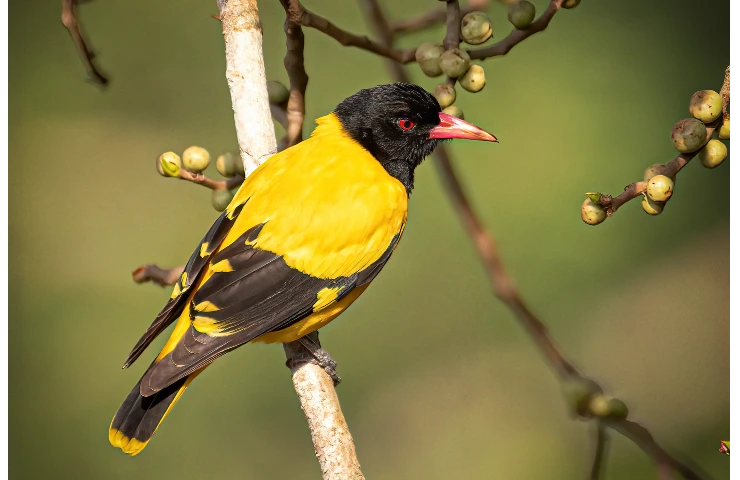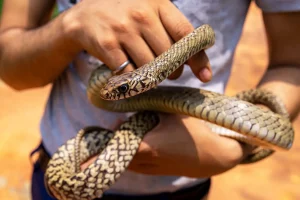The first time I saw the bird was in my childhood in Chandil near Jamshedpur in Jharkhand. In Bangla it is called Holde pakhi (yellow bird) because of its yellow colour like turmeric.
Decades later, when I started bird photography, I learned the English name of Halde Pakha – Black-hooded Oriole attributed to its golden yellow body.
A fortnight ago during my avian photography quest in the forest of Bondla in Goa, I got the opportunity to see this magnificent bird closely. We heard a short, fluty bird-song "pupilio”.. “pupilio" as we entered the forest range. We knew that the song was of a Black-hooded Oriole, one of the most beautiful birds on the planet
Song of Black-headed Oriole : The song is rich, fluty, and mellow. Calls include raspy, nasal notes that can sound like a croak.
This was like finding a golden treasure in the green forest. The Black Hooded oriole is an astonishing burst of golden yellow in a dense green forest. Its call can be heard forever and that striking black hood over its head and yellow colouring body, the bright red eye and peach pink beak elevates its beauty. Some parts of the tail and the wings are also black.
The scientific name for the Black-hooded Oriole is Oriolus xanthornus, which comes from the Latin word for gold and the Greek word for yellow and bird.
According to ebird, Black-hooded Oriole is a passerine bird, meaning it has three front toes and one back toe, which help this avian for perching. Its main diet is fruits and insects. This, normal sized bird, flies rhythmically, flapping its wings, stopping, and then again flapping.
As is true with many bird species, the male's coloration is typically more vibrant than the female's. While male is yellow with a black head and throat, the female is a drabber bird with greenish underparts, but still has the black hood.
Though the bird is a resident of the Indian continent and other parts of South-Asia, it has been celebrated in Bengali literature and folktales. One of my photographer friends from Bangladesh informed me that other than Holde Pakhi, this species is known as “Isti Kutum” and “Bene Bou” in Bangladesh and West Bengal.
“There is a belief in our village that if we see this bird in the daytime then we assume that a guest would come to visit our house soon. In Bengali, both the word Isti and Kutum refer to the word 'guest' in English,” says M Mamunur Rahman, a wildlife photographer of Bangladesh.

A folk tale from West Bengal says that the origin of the bird is from an unfortunate wife of a merchant family. The girl was tortured by her mother-in-law who used to make her starve for the slightest mistake. On one such occasion, the girl was starving for two days, and yet she had to make pithas (a handmade sweet dish of Bengal). The girl, who could not bear her hunger any more, started eating hot pithas when her mother-in-law was out of sight. Her garments were already stained by the turmeric paste she used for the cooking of other dishes. Suddenly the mother-in-law came and in utter shock the girl jumped into a nearby pond and killed herself. A goddess resurrected her as a black hooded oriole. Hence, the name of the bird is "Bene bou" which means the merchant's wife.
There are about 30 species spread across the planet.
Prominent wildlife experts and writers David Chandler and Dominic Cousens, recently raised our Black-hooded Oriole to a luminary status by featuring it in their book titled "100 Birds to See Before You Die." They chose only a hundred out of the 11,000 species of birds of the world, and one of our birds made that elite list!
Also Read: May your life be as colourful as the nine coloured Navrang – Indian Pitta




















